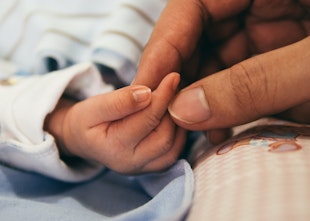A C-section is an operation which allows the baby to be born through incisions in the abdomen and uterus istead of going through the birth canal. Elective C-sections are increasing in popularity every year, we discuss everything you need to about them to help you decide how you would like to give birth.
In recent years, elective C-sections are rising in popularity, with an increased number of women preferring to go under the knife than have a traditional vaginal birth. Giving birth can be a daunting prospect for many expectant mothers. The fear of not knowing when exactly you will go into labour, the anticipation of how many hours you will be in labour and not to mention the pain! No matter what way you choose to bring your new little one into the world, it is all worth it of course. However, these may be some of the reasons why elective C-sections are increasing in popularity.
A C-section or caesarean section is an operation which allows the baby to be born through incisions in the abdomen and uterus instead of going through the birth canal. A C-section can be scheduled in advance if you are having multiple births or have previously had a C-section, this is known as an elective C-section. They can also be done if you develop complications in your pregnancy, this is known as an emergency C-section.
Why might you choose to have a C-section?
- You have already had a Caesarean section. There is an increased risk of uterine rupture with a vaginal birth if you have previously had a C-section.
- If your baby is in breach or transverse position, often a C-section is the only option.
- You are having multiple births. Twins can be delivered vaginally if the first baby is in a normal position. However, if you are having triplets or more a C-section must be performed.
- If you have a medical condition like diabetes or heart disease, as this can increase the risk of complications during labour.
- If your placenta covers or partially covers the cervix, this is known as placenta praevia and a C-section is usually recommended.
Pros and Cons
- It can be scheduled in advance, which helps to relieve the anxiety of not knowing when you’re going to give birth, allows you to plan around the birth and gives you time to mentally prepare yourself.
- If you have a C-section your pelvic floor will not be damaged. Pelvic floor damage often leads to incontinence in many women with vaginal birth.
- There is a lower risk of your baby experiencing birth trauma which occurs with vaginal birth.
- There is a longer recovery time. Women who have a C-section typically stay in the hospital for 2-5 days after the birth.
- There’s a higher risk of infection and blood loss as a C-section is a major surgery. However, proper care of your wound will speed up recovery and reduce the risk of infection.
- There’s a higher risk of respiratory problems with babies delivered by C-section.
However you end up giving birth, it is undeniably an amazing, empowering and life changing experience.






